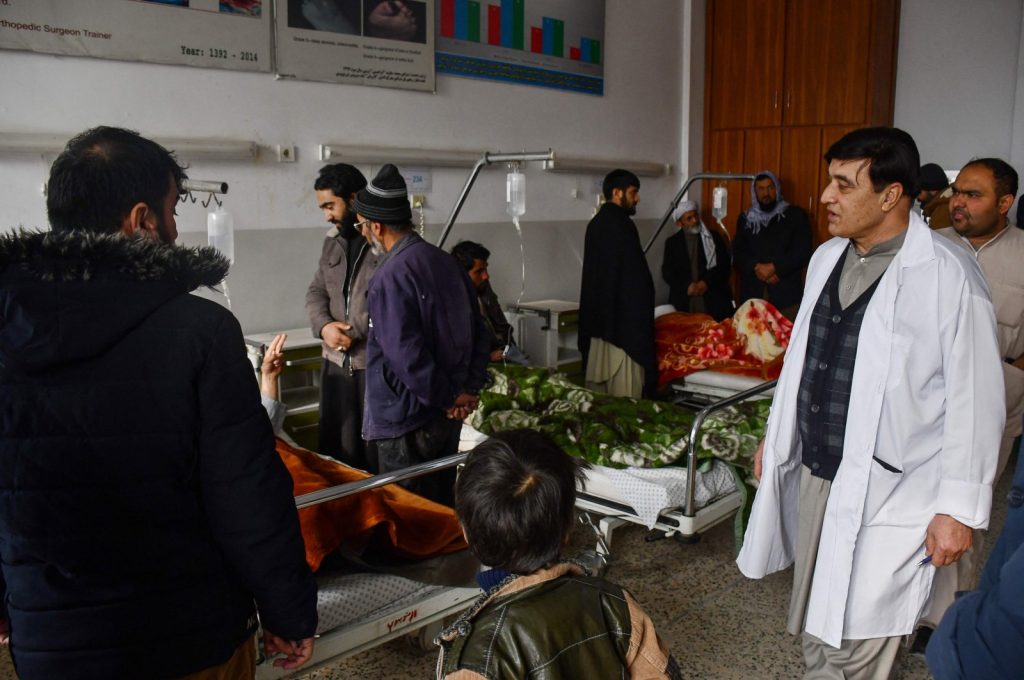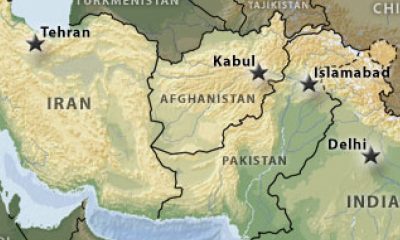Two explosions rocked northern and eastern provinces of Afghanistan on Tuesday, leaving dozens casualties with the Taliban security leadership apparently scrambling to maintain security.
At least 20 people were killed in the first blast as a result of roadside bomb hit a bus in the city of Mazar-e-Sharif in Balkh province.
“Another 13 people received injuries in the blast,” sources aware of the matter told harici.
Those killed were petroleum company employees and in total there were at least 50 people on the bus when the explosion happened.
Taliban provincial police spokesman, Mohammad Asif Waziri confirmed the death of seven people and the injuries of six others in the explosion.
“The bomb was placed in a cart by the roadside and detonated as the bus arrived,” Waziri added. The nearby shops and houses in the Police District 3rd where the blast happened, were also damaged.
Balkh province, which has come under several deadly attacks in the past too, is home to one of Afghanistan’s main dry ports in the town of Hairatan, near the border with Uzbekistan.
Another blast later in the day near the money exchange market in Jalalabad, the provincial capital of Nangarhar province, claimed the life of one person while six others were wounded in the blast.
The cause of the blast was not immediately clear, and the Taliban started a hunt operation to arrest the perpetrators.
Recent violence also included suicide bombings
Recent violence has also included a suicide bombing that took the lives of four people at a mosque in October, while the recent one was on Friday 2 December that killed a guard of Jahdi leader Gulbuddin Hekmatyar, the same day as an apparent failed assassination attempt at the Pakistan embassy in the capital Kabul.
Multiple attackers, one in female burqa, were killed and several guards injured in the suicide bomb attack with aim to kill Hekmatyar. In a video statement, party leader Hekmatyar confirmed one of his guards had been killed.
It is not clear who was behind the attack, but Hekmatyar said that a failed attempt happened by those who have done it many times in the past but have failed frequently.
Hekmatyar, who held the office of Prime Minister twice during the 1990s, founded Hezb-e-Islami political party in the mid-1970s as one of the main Mujahideen groups fighting the 1980s Soviet invasion from its base in Pakistan.
On the same day, Islamic State (IS) also known as the Daesh group claimed responsibility for targeting Pakistan’s head of mission, Ubaid-ur-Rehman Nizamani, who escaped unscathed, while his guard was critically wounded.
Taliban focusing on securing the country
Taliban, who seized power following the withdrawal of foreign troops in August 2021, have said they are focused on securing the country. The Taliban repeatedly reiterated support for a stable and peaceful Afghanistan, and assured all out efforts to maintain security. The Taliban also vowed to work to improve trade, economy, security and defense. Investigations also launched into recent incidents in Balkh, Kabul and Nangarhar provinces.

Relatives visit people injured in a bomb attack receiving treatment at a hospital in Mazar-e-Sharif, Afghanistan, Dec. 6, 2022. (AFP)
However, the Taliban’s efforts to maintain security are apparently a failure and the leadership needs new security mechanisms to deal with growing violence incidents.
Last month, at least 20 people were killed and over 25 others were wounded in a bomb blast in Jihadyah Madrassa in northern Samangan province. Most of the casualties are Madrassa students between eight to 18 years old. It is worth mentioning that in the past 20 years, this was the first bombing inside a madrassa in Samangan that inflicted casualties on the students. Even today, no group claimed responsibility for the attack.
In May, at least nine people were killed in a series of explosions again in Mazar-i-Sharif, while two others were killed in a simultaneous attack at a mosque in Kabul. Another deadly Daesh bombing was in a mosque in Kunduz province that killed and wounded nearly 150 worshippers.
Meanwhile, Taliban Acting Minister of Defense, Mawlawi Mohammad Yaqoob Mujahid, who is in UAE, met with the US Special Envoy for Afghanistan, Thomas West in Abu Dhabi and discussed security situations.
Mujahid told West that the world should respect Afghanistan’s sovereignty, and on his part assured that Afghanistan and its borders are secure and there are no threats from Afghan soil to any country.
West also met with some Afghan traders in the UAE, and left for India and met with the country’s security and external affairs as part of efforts to discuss the urgent need for national political dialogue among Afghans. He will also travel to Japan for the same purpose.


 OPINION1 week ago
OPINION1 week ago
 DIPLOMACY6 days ago
DIPLOMACY6 days ago
 ASIA6 days ago
ASIA6 days ago
 AMERICA2 weeks ago
AMERICA2 weeks ago
 MIDDLE EAST1 week ago
MIDDLE EAST1 week ago
 AMERICA2 weeks ago
AMERICA2 weeks ago
 DIPLOMACY3 days ago
DIPLOMACY3 days ago
 ASIA2 weeks ago
ASIA2 weeks ago





















